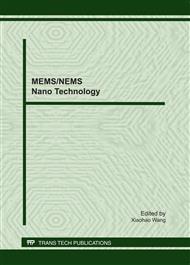p.663
p.668
p.674
p.679
p.684
p.690
p.694
p.699
p.705
Rapidly Identify the Critical Parameter of MEMS Device Based on Element Model Library
Abstract:
The purpose of this paper is to introduce a simplified yet efficient method to identify the critical parameter of MEMS device based on rapid computer experiments instead of expensive physical experiments. The prototype model of MEMS device is rapidly established by connecting reusable and parameterized element models based on developed element model library. Critical parameters are identified and optimal parameter assemblies are obtained using Taguchi method based on computational experiments of the prototype model. A typical MEMS device--micro resonator is used for demonstrating the design methodology. The method enables the designer to rapidly identify critical parameter of a new MEMS device in early stage of design.
Info:
Periodical:
Pages:
684-689
Citation:
Online since:
June 2011
Authors:
Price:
Сopyright:
© 2011 Trans Tech Publications Ltd. All Rights Reserved
Share:
Citation:


